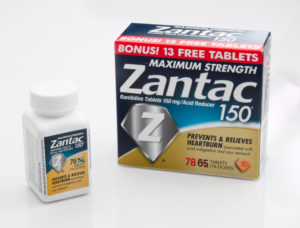Why pharmacy data is key to your SNF’s future
Pharmacy services are mainly about getting the prescribed medications to residents and keeping them on their medication treatment plans, right? Not anymore—not by a long shot.
New standards are in the making to involve pharmacists in much greater roles in senior care delivery and to integrate pharmacy data into other senior health information efforts, noted presenters at the recent Long Term and Post Acute Care Health IT Summit in Baltimore.
Wherever seniors may visit within their care continuum, including primary care physician offices, hospitals and skilled nursing or rehabilitation sites, the one person who interacts with residents the most is the pharmacist, says Frank Grosso, RPh, executive director and COO of the American Society of Consultant Pharmacists (ASCP). That should logically make the pharmacist one of the most important players in resident medication management and data capture, yet it is a role that many senior care communities have not yet fully embraced, he says.
Enter the consultant pharmacist, whose role is far beyond mere pill-counting or drug distribution. Consultant pharmacists review the drug regimen of each resident on a regular basis, review the prescribed drugs in light of the current clinical conditions over time, review related lab work, review the physician progress notes and watch for possible polypharmacy interactions. In short, the consultant pharmacist is the right hand of the prescribing physician, filling in all the crucial meds data in between physician visits, while simultaneously tracking medication compliance and drug effectiveness.
The emerging importance of pharmacists in the senior care continuum has led to the Pharmacy HIT Collaborative, whose nine founding members include ASCP, the American College of Clinical Pharmacy, the Accreditation Council for Pharmacy Education and the American Pharmacists Association. The collaborative works closely with the NCPDP (National Council for Prescription Drug Programs) and HL7 workgroups to improve the coding standards and information exchange processes for pharmacy information within long-term care and other care settings.
The collaborative participates in continuity of care documentation efforts and is a key player in establishing protocols for e-prescribing and the shifts toward skilled nursing's inclusion in the bi-directional information exchange as required under Meaningful Use Stage 3. And those new regs are not just about medication lists—they’re about data on clinical indications, intended use and drug-related change of therapy (COT), too.
"We don’t need any more studies. We know what needs to happen, so we need to figure out how to manage the process during transitions of care," Grosso says. "The information is out there, it’s in the PBM (prescription benefits manager), and it’s in the EHR." But the crucial medication reconciliation process is frustrating at the site level, and too much information is still siloed in documentation fields that don’t transfer easily from one IT system to another, he adds. Fixing the frustrations means dealing with connectivity issues, which still abound, Grosso says.
Plenty of data exchange hurdles still exist between pharmacy dispensing sites and EHRs, but more problems also surface at the people-level, says Arnold Clayman, PD, vice president of government affairs at ASCP. Consultant pharmacists report that a lack of training on facility-specific EHRs and roadblocks to information access are also key barriers.
The home health service line can add another layer of potential hurdles, Clayman says. “Home health systems don’t always integrate or are proprietary, there are still lots of paper or scanned PDFs/attachments, and multiple third-party players can be involved, depending on clinical needs.” Not to mention the documentation differences between home health’s OAIS documentation system and skilled nursing’s MDS system, he adds. "Providers and system vendors both need to sidle up to the plate."
Related articles:
The pharmacist is in
CAST releases updated meds management matrix

Pamela Tabar was editor-in-chief of I Advance Senior Care from 2013-2018. She has worked as a writer and editor for healthcare business media since 1998, including as News Editor of Healthcare Informatics. She has a master’s degree in journalism from Kent State University and a master’s degree in English from the University of York, England.
Related Articles
Topics: Articles , Clinical











